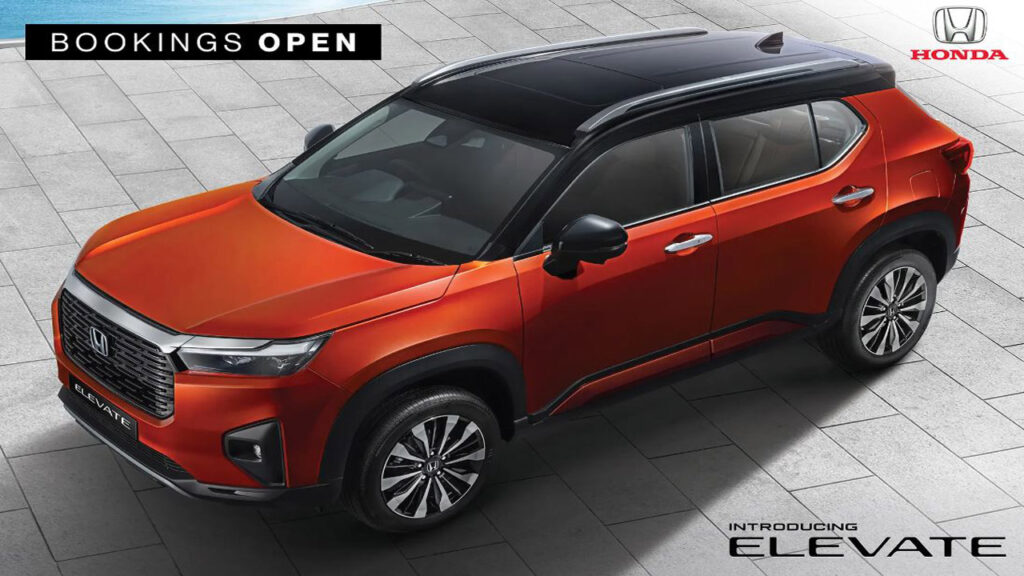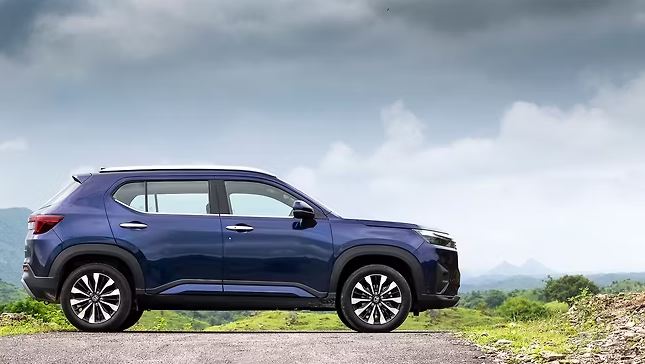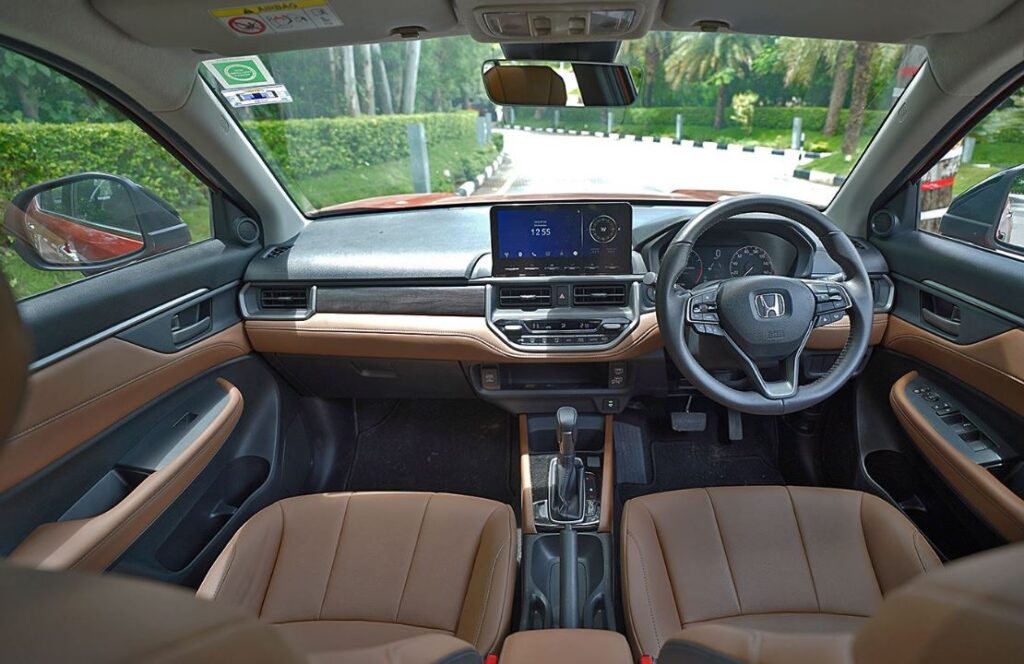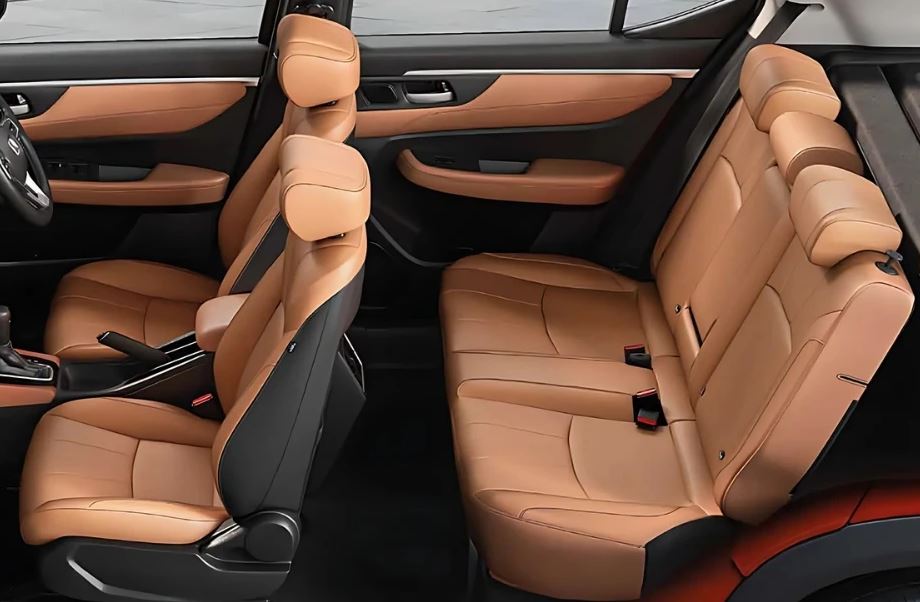2025 Honda Elevate Review: What You Need to Know About This Compact SUV

The 2025 Honda Elevate steps into the midsize SUV segment with a solid focus on practicality, safety, and reliability. It’s built for those who want a compact SUV that doesn’t compromise on space or comfort. With Honda’s trusted engineering, you get a smooth-driving petrol engine paired with modern safety tech like six airbags and advanced driver assists.
This model offers roomy seating and the largest boot space in its class, making it a smart choice for families or anyone needing versatile cargo room. Whether you’re navigating city streets or weekend getaways, the Elevate balances rugged styling with everyday usability. Expect straightforward controls, a comfortable interior, and enough features to keep daily drives easy and safe.
Performance and Specifications
When you step into the 2025 Honda Elevate, you’re getting a compact SUV that keeps things straightforward but solid under the hood. Honda sticks with its trusted 1.5-liter i-VTEC petrol engine, blending reliable power with everyday usability. This section breaks down what makes the Elevate tick — from its engine and transmission options to fuel efficiency and how it handles typical Indian roads.
Engine and Transmission
The Elevate packs a 1.5-liter naturally aspirated petrol engine, equipped with Honda’s i-VTEC technology. This engine produces around 119-121 horsepower at 6600 RPM and delivers 145 Nm of torque at 4300 RPM. It’s not about pushing maximum speed but providing smooth, linear power delivery that feels refined whether you’re stuck in city traffic or cruising on the highway.
You get two transmission choices:
- A 6-speed manual gearbox for those who enjoy feathering the clutch and controlling gears themselves.
- A 7-speed CVT (Continuously Variable Transmission) automatic for smoother acceleration and easier driving especially in stop-and-go traffic.
Mixed together, these options let you pick what fits your driving style. The manual feels engaging, while the CVT shines with seamless shifts and better fuel economy. The powertrain is tuned to feel responsive with a smooth throttle, helping you roll off smoothly from traffic lights or overtaking with ease.
Fuel Efficiency and Driving Dynamics
Fuel economy is an important factor, especially in city-heavy traffic. The official figures state:
- 16.92 kmpl for the CVT automatic
- 15.31 kmpl for the manual
In real-world driving, you might expect close to 10-13 kmpl around the city due to throttle response and gear ratios. On highways, the Elevate tightens that gap with steadier consumption.
The Elevate’s ground clearance is impressive, sitting between 208mm and 220mm, depending on the variant. This is a key advantage for Indian roads, letting you handle potholes, speed breakers, and uneven terrain confidently without scraping the underside.
Ride comfort benefits from a well-tuned suspension setup. The front uses MacPherson struts with a rear twist beam, striking a balance between absorbing bumps and offering stable handling. Steering is light at low speeds for city maneuvering and firms up as you pick up pace, making highway drives feel composed.
Overall, the Elevate feels steady and poised. It won’t thrill you with blistering acceleration or sporty cornering, but its comfortable ride, decent fuel efficiency, and reliable engine make it an easy daily companion for urban drivers and weekend travelers alike.
Exterior and Interior Design

The 2025 Honda Elevate balances rugged style with thoughtful comfort inside. It’s built to stand out on rough roads while providing a welcoming space when you step inside. Here’s what makes its design practical and appealing—both outside and in.
Exterior Features and Styling
From the outside, the Elevate wears a tall, bold stance that speaks strength and readiness. It doesn’t just look good; every design element serves a purpose:
- Large, horizontal grille: This wide grille gives the front a solid, confident face and improves airflow.
- Roof rails: Tough and functional, these add a sporty touch and let you carry extra gear on top.
- Dual-tone 17-inch alloy wheels: These wheels don’t just catch eyes—they provide stability and grip on uneven terrain.
- LED headlamps and tail lamps: Bright and efficient LED lights offer clear visibility day and night while adding a modern flair.
- High ground clearance: At about 220mm, the Elevate clears potholes and rough patches with ease, essential for Indian roads.
The overall look combines clean lines with muscular curves, giving it a balanced, practical vibe. It feels built for both city streets and outdoor adventures without sacrificing style or function.
Interior Comfort and Technology

Step inside the Elevate, and you’re greeted by an airy cabin with premium touches that make every ride enjoyable. Honda focuses on comfort and modern tech that stays simple but smart:
- Dual-tone premium interiors: The mix of colors and soft-touch plastics uplifts the space, making it feel roomy and refined.
- 8 to 10.25-inch touchscreen infotainment: This crisp display supports wireless Android Auto and Apple CarPlay, keeping your apps and music at your fingertips without clutter.
- Automatic climate control: Keeps the cabin at your preferred temperature without constant adjustments.
- Keyless entry: Convenience is key here—you can unlock and start the car without fumbling for keys.
- Ample storage spaces: Thoughtfully placed compartments and cup holders help keep the cabin clutter-free.
The seats are designed for comfort during long drives, with enough legroom and headroom for five occupants. Controls are user-friendly, putting essentials within easy reach so you stay focused on the road.
Together, these exterior and interior features position the Elevate as a practical SUV that doesn’t skimp on style or comfort. It’s ready to handle everyday use and weekend adventures alike.
Advanced Safety and Driver Assistance Systems
When it comes to safety, the 2025 Honda Elevate stands out with a solid mix of basic protections and advanced technologies. It’s built to keep you and your passengers secure on every drive, whether in city traffic or on highways. Let’s take a closer look at the safety features you’ll find standard and those that come with its smarter driver assistance systems.

Basic and Passive Safety Features
The Elevate carries the weight of Honda’s safety reputation with strong basics that you can rely on every day. Built on a robust platform shared with the popular Honda City, the Elevate earned a 5-star rating in the Japan NCAP crash tests. This rating reflects its strong body structure and smart energy-absorbing design.
Here’s what you get right out of the box for occupant protection:
- Six airbags covering front, side, and curtain areas provide all-round impact cushioning.
- Anti-lock Braking System (ABS) with Electronic Brakeforce Distribution (EBD), which helps maintain steering control under heavy braking.
- Rear parking sensors combined with a multi-angle rearview camera make parking easier and safer.
- Structural reinforcements using Honda’s ACE (Advanced Compatibility Engineering) body technology, designed to distribute crash forces away from the cabin.
- Electronic Stability Control (ESC), which keeps the vehicle stable under sharp turns or slippery roads.
- Hill-Start Assist (HSA) to prevent roll-back on inclines, building driver confidence on rough or steep roads.
These features deliver peace of mind without you having to think about them. The Elevate’s foundation is about keeping you safe in everyday scenarios and unexpected moments alike.
ADAS and Advanced Safety Technologies
Move up to the higher trims, and the Elevate introduces the Honda Sensing suite, a collection of advanced safety and driver assistance features that bring semi-autonomous capabilities to your drive. This system stays one step ahead by scanning the road and helping you avoid hazards before they become serious problems.
Honda Sensing includes several Level 2 ADAS (Advanced Driver Assistance Systems) features such as:
- Adaptive Cruise Control (ACC): Maintains a set speed and distance from the car ahead, automatically adjusting speed during traffic.
- Collision Mitigation Braking System (CMBS): Detects imminent frontal collisions and applies brakes automatically if you don’t react fast enough.
- Lane Departure Warning (LDW) and Lane Keeping Assist System (LKAS): Alerts you if you drift from your lane unintentionally and gently steers the car back onto track.
- Road Departure Mitigation (RDM): Recognizes lane markings or road edges and prevents the vehicle from leaving the road.
- Traffic Sign Recognition: Reads speed limits and other important road signs and can notify you to adjust your speed.
- Auto High Beam: Automatically adjusts the headlamp intensity for safer driving at night without blinding other drivers.
Together, these systems do more than just assist; they help reduce driver fatigue and raise overall safety by actively monitoring your surroundings. For a compact SUV, having such technology takes the driving experience to the next level — you feel more secure, especially during long highway trips or busy city driving.
With the Elevate, safety isn’t just about reacting to danger; it’s about preventing it. Between its solid crashworthiness, essential protective measures, and smart assistance tech, you get a package that gives you confidence behind the wheel every mile of the way.
Variants, Pricing, and Market Positioning
When you look at the 2025 Honda Elevate, it’s clear you’re getting more than just a compact SUV. The model lineup has been thoughtfully crafted to suit different needs and budgets without losing sight of Honda’s commitment to reliability and safety. Whether you’re after basic comfort, value for money, or the latest tech and safety features, the Elevate offers options that fit the bill. Let’s break down what each trim brings to the table, how pricing stacks up, and where this SUV sits among its competitors.
Trim Levels and Feature Highlights
The Honda Elevate is available in four main trims: SV, V, VX, and ZX. Each step up adds meaningful features, giving you choices aligned with what matters most to you.
- SV (Base Model)
This entry-level trim starts at around ₹11.91 lakh. It covers all the essentials with standard safety gear like six airbags and ABS, plus key convenience features such as manual air conditioning and a basic infotainment system. The SV is a solid choice if you want an affordable SUV backed by Honda’s build quality. - V Trim
Sitting above the SV, the V trim balances affordability and added comfort. You get automatic climate control, rear AC vents, and a touchscreen infotainment system with wireless Android Auto and Apple CarPlay. The V trim also offers a CNG fuel option in select versions, making it appealing if you want lower running costs without compromising on Honda’s reliability. - VX Trim
The VX ramps up both style and convenience. Expect premium upholstery, keyless entry, and a more feature-rich infotainment setup. It’s designed for buyers who want a bit more luxury and tech without jumping to the highest price point. - ZX (Top-End Variant)
Here’s where the Elevate really shines. The ZX trim includes Honda Sensing ADAS—adaptive cruise control, lane keeping assist, collision mitigation braking, and more—pushing safety tech to the next level. It features a large 10.25-inch touchscreen, premium dual-tone interiors, 17-inch alloys, and additional comfort touches. It’s the pick if you want the latest tech and advanced safety in your compact SUV. This trim is priced at around ₹16.73 lakh and is the most popular choice among buyers, making up over half of total sales.
This lineup ensures you can find a version that fits your daily needs, whether it’s efficient CNG travel, basic commuting, or tech-savvy cruising.
Pricing Strategy and Competitor Comparison
Honda has approached pricing for the Elevate with a clear focus on value. Starting at ₹11.91 lakh for the base variant and topping out near ₹16.73 lakh for the ZX Black Edition, the range is competitive within the midsize SUV segment.
A recent adjustment includes a price cut in select variants and the launch of the Apex Summer Edition, based on the V trim. This special edition adds a fresh 9-inch touchscreen, ambient lighting, and a 360-degree camera. Priced between ₹12.39 lakh and ₹13.59 lakh, it offers more features at a modest premium, aiming to attract budget-conscious buyers who don’t want to miss out on value-added equipment.
How does this compare with rivals? Models like the Hyundai Creta, Maruti Suzuki Grand Vitara, and Toyota Hyryder all compete for attention in this space. The Elevate stands out by delivering:
- A spacious interior and largest boot space in its class, perfect for families.
- Strong safety credentials, with six airbags and Honda Sensing ADAS available in higher trims.
- Reliable performance, built on proven Honda engineering that promises long-term durability.
Though competitors may offer hybrid variants or panoramic sunroofs that the Elevate lacks, Honda holds firm on delivering essentials that really count: build quality, safety, and user-friendly technology.
In terms of long-term ownership costs, the presence of a CNG option in the V trim adds a practical edge, helping reduce fuel expenses without major compromises.
Overall, the Elevate strikes a neat balance between pricing, features, and dependability. It’s priced right for buyers who want a no-nonsense, well-rounded SUV that’s ready for both city streets and weekend escapes — all backed by Honda’s global reputation for quality.
Conclusion
The 2025 Honda Elevate strikes a smart balance between reliable performance, strong safety, and practical design. Its roomy interior, combined with advanced tech and a robust safety package, makes it a smart pick for families and urban drivers. With competitive pricing and thoughtful features across trims, it offers good value without overcomplicating things. Choosing the Elevate means you get a compact SUV that’s easy to live with every day and confident enough for weekend trips. Its focus on essentials over flash puts you in control of a solid, well-rounded SUV built to meet real needs.
Read Also: Toyota Corolla Cross Facelift: What’s New in Design, Tech, and Performance for 2025

